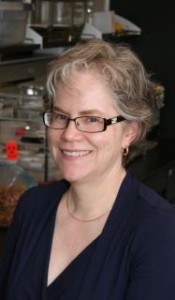Irrigation water, hand hygiene, and crap in the soil – the big three of produce safety.
Linda Harris, who was on my PhD committee all those years ago, has spent a lot of time in poop since then, the pretty California kind.
And she’s the lede author on a paper to formalize how to study poop, and  whether it presents a produce risk.
whether it presents a produce risk.
A Framework for developing research protocols for evaluation of microbial hazards and controls during production that pertain to the application of untreated soil amendments of animal origin on land used to grow produce that may be consumed raw.
Journal of Food Protection, Number 6, June 2013, pp. 928-1108 , pp. 1062-1084(23)
Authors: Harris, Linda J.; Berry, Elaine D.; Blessington, Tyann; Erickson, Marilyn; Jay-Russell, Michele; Jiang, Xiuping; Killinger, Karen; Michel, Fredrick C.; Millner, Pat; Schneider, Keith; Sharma, Manan; Suslow, Trevor V.; Wang, Luxin; Worobo, Randy W.
http://www.ingentaconnect.com/content/iafp/jfp/2013/00000076/00000006/art00022
Abstract:
Application of manure or soil amendments of animal origin (untreated soil amendments; UTSAs) to agricultural land has been a long-standing practice to maintain or improve soil quality through addition of organic matter, nitrogen, and phosphorus. Much smaller quantities of these types of UTSAs are applied to land used for food crops than to land used for animal grain and forage. UTSAs can harbor zoonotic enteric pathogens that may survive for extended periods after application. Additional studies are needed to enhance our understanding of preharvest microbial food safety hazards and control measures pertaining to the application of UTSAs especially for land used to grow produce that may be consumed raw. This document is intended to provide an approach to study design and a framework for defining the scope and type of data required. This document also provides a tool for evaluating the strength of existing data and thus can aid the produce industry and regulatory authorities in identifying additional research needs. Ultimately, this framework provides a means by which researchers can increase consistency among and between studies and facilitates direct comparison of hazards and efficacy of controls applied to different regions, conditions, and practices.
